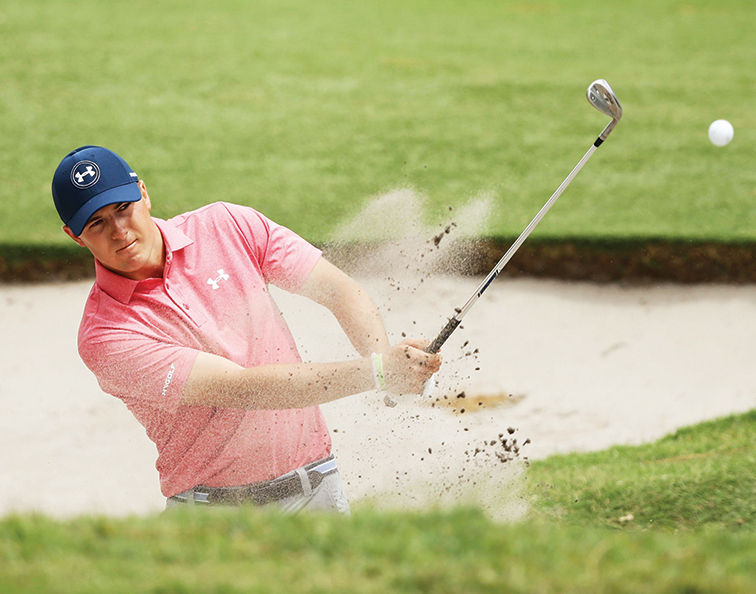IN AUSTRALIA, we tend to spend a lot of time glorifying the ‘masculine’ elements of golf. The long drive. The 180-metre 7-iron. The guy that hits a short iron for his second into a par 5. These are the focal points for discussion in the clubhouse after the round. Rarely do we spend much time talking up the art of maximising a score by wringing the absolute most out of a round. That’s considered lucky, and sometimes even looked down upon. The player that grinds out rounds through grit and determination rarely qualifies for the same admiration, despite often shooting lower scores than their more heroic counterparts.
We tend to forget that in our game, the end justifies the means, which brings me to Jordan Spieth and the 2016 Australian Open. With a spluttering engine firing on only six of its eight cylinders, Spieth somehow overcame such limitations to capture his second Australian Open in three years. Arriving in Australia after a six-week break and with a new, untested swing in tow, few knew what to expect from the former world No.1.

Nor, it appeared, did he. What he delivered was a mix of Major champion and minor league. Drives that clattered into trees right and left of the fairway, short irons that lacked his normal distance control, and at times a countenance that looked mystified at how to fix it. What never left him, however, was a remarkable short game that repeatedly allowed him to save par from the toughest situations. Spieth’s bunker play for the week was simply next-level, displaying a sense of touch and imagination that goes beyond technique, and of a quality that many of the world’s best can only fantasise about.
On top of this, Spieth is one of those remarkable sportsmen who can put the past behind him in a heartbeat. There were remonstrations, and exhibitions of frustration, but once he arrived at the next shot, it seemed that he was always ready to execute. It is a quality that receives little attention when his strengths are examined, but it is undoubtedly something that he draws on in times of need.
For most of last year, it seemed he needed a deeper well of resolve to draw from as the shadow of the 2016 Masters haunted the 23-year-old. His back nine implosion when leading by five strokes cast a shadow over the rest of the season, shaking his confidence. That performance clearly posed questions to him that he was at times unable to answer. At the same time, the rest of his peer group stepped up in a major way – Jason Day, Rory McIlroy and Dustin Johnson in particular continually pushing him down the world rankings. By the time the Australian Open began, Spieth had slipped to world No.5 after beginning 2016 at No.1.
Such a place in the pecking order clearly doesn’t sit well with him. In 2014, he used a final-round 63 and subsequent Australian Open triumph as a springboard to a dominant 2015 on the US PGA Tour. For most of last year’s championship, he rarely looked like repeating that result. Yet at the death, he somehow found enough to claw his way to the top of the leaderboard and to give himself a playoff opportunity. The rest, as they say, is history.
The difference between the American and Australian attitude towards outcome-related aspects of our game was once explained to me in the following way. After a round, the Australian question would be, “How did you play?” In America, it was simply, “What score did you shoot?” In other words, the trophy only records the name of the winner, not how it was achieved. It is something worth remembering during future 19th hole post mortem’s.




